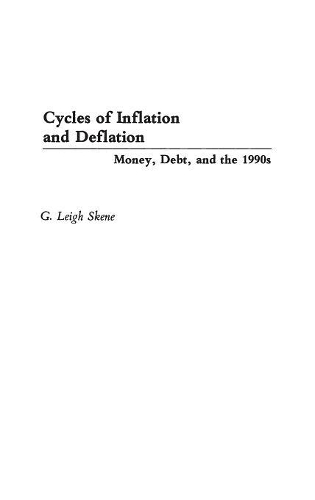
Cycles of Inflation and Deflation: Money, Debt, and the 1990s
(Hardback)
Publishing Details
Cycles of Inflation and Deflation: Money, Debt, and the 1990s
By (Author) G. Leigh Skene
Bloomsbury Publishing PLC
Praeger Publishers Inc
17th September 1992
United States
Classifications
Tertiary Education
Non Fiction
Economic history
332.4
Physical Properties
Hardback
178
Description
This work examines the role money and debt play in our economy. It shows why we went from the gold standard to fiat money, why that led to increasing inflation up to 1980, and why inflation has receded since 1980. In addition, it explains how today's economic problems arose, why governments cannot solve those problems, and where those problems will lead us. Challenging conventional wisdom, the author suggests that high real interest rates in the 1980s reduced business's ability to profit by expanding productive capacity and reduced the attractiveness of borrowing for consumption. The resulting drive to buy assets instead, such as stocks and real estate, caused rapidly rising prices in those areas. The author foresees a depression resulting from these economic forces - one which governments will be unable to prevent. A characteristic of this work is that it neither espouses any theory nor uses inductive or deductive reasoning; rather, it observes. Its observations of how economic sectors, central banks, governments, business and consumers can and do use money and debt are trenchant and alarming. G. Leigh Skene is an economic consultant specialising in markets, stocks, bonds, real estate and commodities. For 14 years, he served as chief economist for Burns, Fry, one of Canada's largest investment dealers.
Author Bio
G. LEIGH SKENE is an economic consultant specializing in markets, stocks, bonds, real estate, and commodities. For fourteen years, he served as chief economist for Burns, Fry, one of Canada's largest investment dealers.
